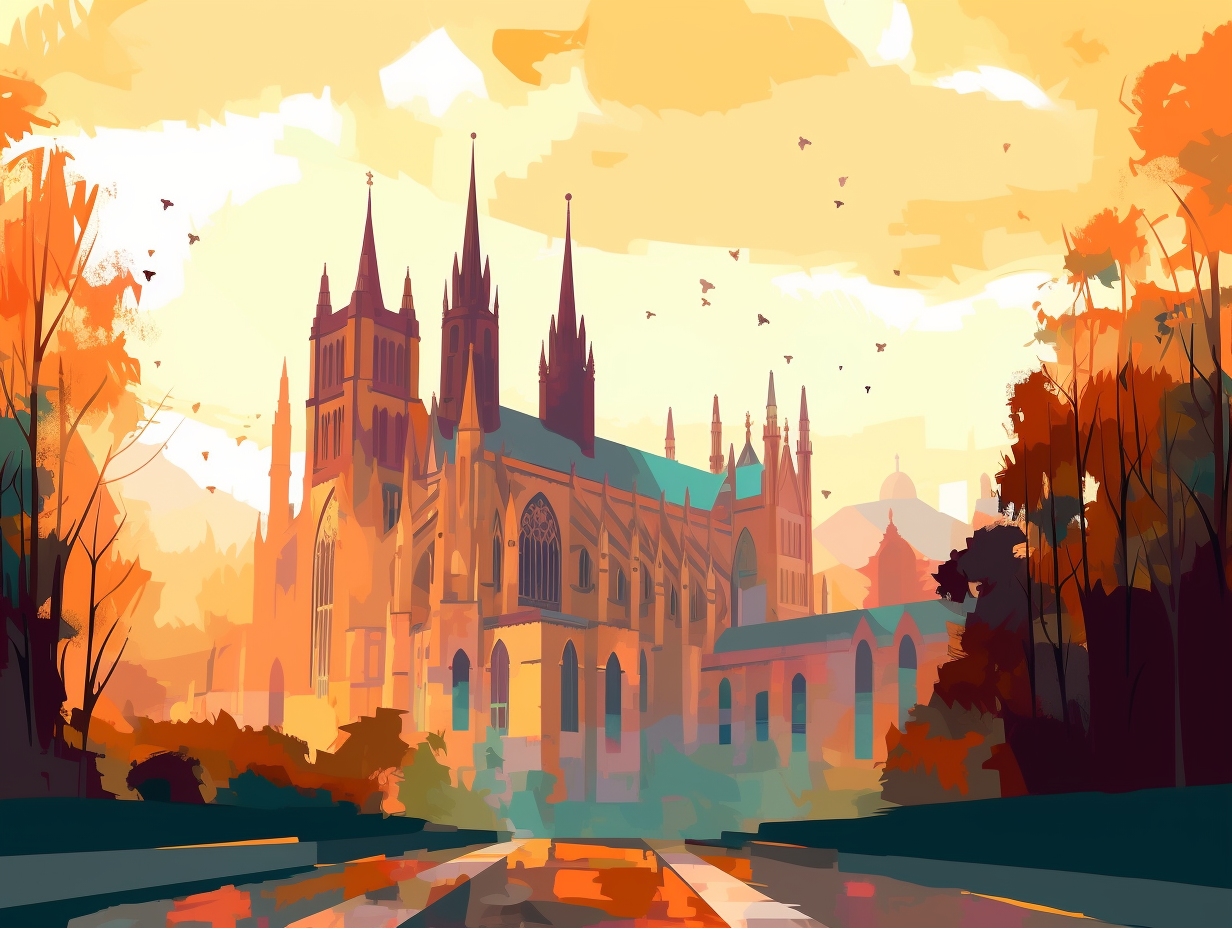Discover Canterbury Cathedral: 11 Amazing Fun Facts You Never Knew!

1. The Ultra-Stretch Limo of Cathedrals
If Canterbury Cathedral were a limousine, it'd be the ultra-stretch, two-storey kind with the champagne bar and VIP lounge: Towering at a whopping 158.4 meters long, this magnificent Gothic architectural wonder not only boasts some of the most dazzling stained glass windows and intricately carved stonework, but it also holds the title of one of the world's longest cathedrals, an epic site of religious pilgrimage since the 11th century.
Source => en.wikipedia.org
2. Captain Jack Sparrow Meets the Black Prince
If the Black Prince were alive today, he'd probably give Captain Jack Sparrow a run for his money: At Canterbury Cathedral, you can find a rare gilt-copper alloy effigy of Edward of Woodstock, aka the Black Prince, commissioned by King Richard II in the mid-1380s; this medieval superhero was the eldest son of King Edward III and boasted serious military swagger, famously leading an army into Aquitaine and coming out victorious at the Battle of Poitiers.
Source => arstechnica.com

Discover the secret superpower of St. Paul's Cathedral! Whisper at one side of the Whispering Gallery and be heard 30 meters away. Even Batman would be impressed! 🦇🔊
=> Fun Facts about St-Pauls-Cathedral
3. The Real Iron Throne: Chair of St. Augustine
Hold on to your pews, folks; there's an ancient chair in Canterbury Cathedral that's more exclusive than the Iron Throne: The "Chair of St. Augustine" dates back to the Norman period and serves as the VIP seating for the formal enthronement of the Archbishop of Canterbury himself – a tradition since at least 1205. So scoot over, Cersei; this ornate relic takes the throne for historical significance and grandeur!
Source => en.wikipedia.org
4. Medieval Throwbacks & Stained-Glass Historic Parties
Feeling a pang of FOMO for medieval times? You're not alone – even Canterbury Cathedral's oldest stained-glass windows seem to be throwing it back to the wild 12th-century parties: New research suggests that certain vibrant windows, initially thought to have been created in the 13th century, actually date back to the 1160s. These early 'comic books,' which depict the lineage of Christ, served as important forms of storytelling for a mostly illiterate population and are among the oldest surviving stained-glass art in the world. Bonus fact: if these windows could talk, they might have some juicy gossip about the 1170 murder of Archbishop Thomas Becket!
Source => dailymail.co.uk

5. Roman-Level Plumbing for Canterbury Cathedral
Talk about Roman-level plumbing: Canterbury Cathedral had a pretty advanced aqua system installed in the 12th century, commissioned by Prior Wibert, which was one of the first water and sewage systems in Britain since the Roman times. This spring-fed, miles-long network of lead pipes supplied 10,000 liters of fresh water per hour for thirsty monks, drainage for unholy waste, and even rainwater collection and disposal—certainly conducive to both a paradisiacal garden setting and some epic culinary escapades.
Source => thegardenstrust.blog
6. Gothic Makeovers & Hush-Hush Cathedral Bank Accounts
Money talks, but does it pray? That's what Canterbury Cathedral asked itself after pocketing some serious dough from incoming pilgrims following a rather stabby incident in 1170: With their newfound wealth, the cathedral underwent a Gothic-style makeover, adding a Trinity Chapel and shrine to commemorate the late, punctured Archbishop, Thomas Becket – all while the humbled cathedral managed to stay hush about its flush bank account after a 1174 fire.
Source => en.wikipedia.org
7. Thomas Becket: Miracle-Worker Sensation
Before Becket was trending on Twitter, he was the medieval world's hottest miracle-working sensation: In 1170, the murder of Thomas Becket in Canterbury Cathedral turned the site into one of Europe's most popular pilgrimage destinations, attracting masses hoping to experience miraculous healings and witness extraordinary events, leading to Becket's sainthood in 1173 and drawing believers from afar until 1538.
Source => britishmuseum.org
8. Canterbury: The Game of Thrones of Cathedrals
From fiery ashes to holy drama, Canterbury Cathedral's history could rival any episode of "Game of Thrones": Constructed between 1070 and 1077, this Romanesque masterpiece was rebuilt twice after devastating fires, with a Gothic twist added after its 1174 rekindling, and boasts of a thrilling murder tale involving Archbishop Thomas Becket in 1170, leading to the creation of the Trinity Chapel to honor him.
Source => en.wikipedia.org
9. How to Get Away with Murder: The Becket Edition
In a medieval episode of "How to Get Away with Murder," Canterbury Cathedral served as the scene for a sinister crime: In this historical hallowed ground, Thomas a Becket, Archbishop of Canterbury under King Henry II, met his untimely end at the hands of four vengeful knights; while the exact spot remains unmarked, visitors can enter through the crypt where a lone candle stands in memory of the once prominent shrine of St Thomas a Becket, casting an eerie glow upon the haunting site of this brutal act.
Source => historytheinterestingbits.com

10. Bell Harry Tower: The Beast of Bell-Weight Champions
If you thought Beauty and the Beast had a heavy bell in their tower, Canterbury Cathedral will leave you quaking in your boots: Canterbury's famous Bell Harry Tower houses 12 bells, with the largest, the Tenor Bell, weighing in at a whopping 1.7 tonnes and reaching 75 meters high, offering a deep, resounding ring since 1762!
Source => en.wikipedia.org
11. Canterbury vs. Chartres: The Stained-Glass Showdown
Move over, Chartres Cathedral, there's a new glass-master in town: Canterbury Cathedral boasts some of the finest stained glass artwork in Britain, with miracle-working windows dating back to the late 12th and early 13th centuries that could give Chartres' famous glass a run for its colorful money.
Source => flickr.com
Related Fun Facts




















